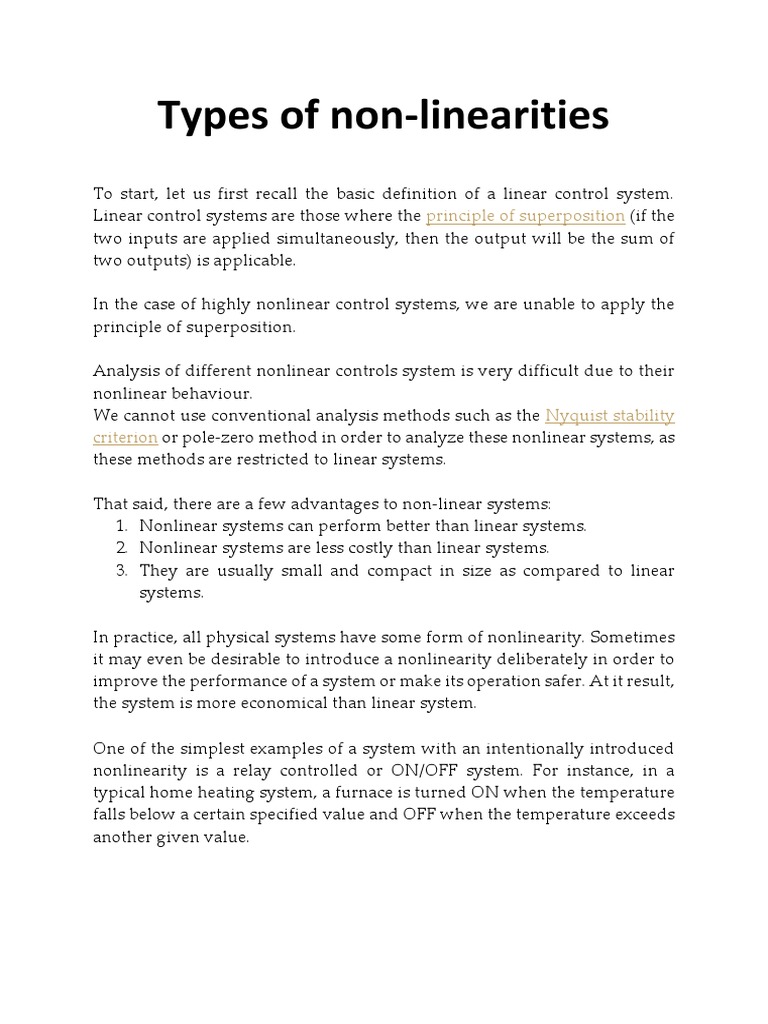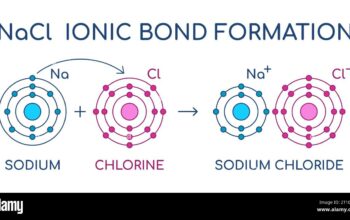Linearity and non-linearity are fundamental concepts that permeate various fields of physics, mathematics, and engineering. At their core, these concepts address how systems respond to stimuli and how input correlates to output. Understanding these principles provides insight into an array of phenomena—in every discipline, linearity often serves as an idealized benchmark against which non-linear behavior is measured. This article delves into the physical meanings of linearity and non-linearity, illuminating their significance across a plethora of scientific domains.
Fundamental Definitions
Linearity refers to a relationship in which the output is directly proportional to the input. This means that if an input is doubled, the output will also double. In mathematical terms, a linear equation can be expressed in the form y = mx + b, where m represents the slope and b signifies the y-intercept. Linear systems, consequently, are characterized by superposition, which allows responses to multiple stimuli to be computed as the sum of their individual responses.
In contrast, non-linearity describes a relationship where the output does not scale proportionally with the input. Non-linear systems are often more complex, exhibiting behaviors such as sensitivity to initial conditions, bifurcations, and emergent phenomena, rendering them fundamentally unpredictable in certain contexts. The mathematical representations of these systems can involve quadratic, exponential, and other non-linear equations.
The Nature of Linearity
Linearity is deeply rooted in various laws of physics, acting as a cornerstone in many classical systems. For instance, Newton’s second law of motion can be considered linear when dealing with small forces and accelerations, allowing straightforward calculations of forces acting upon an object. In electrical circuits, Ohm’s Law—an equation that relates voltage, current, and resistance—is fundamentally linear under typical operating conditions.
One of the most striking attributes of linear systems is their predictability. This predictability engenders a sense of comfort, as solutions can often be attained via analytical methods. Moreover, techniques such as Fourier analysis thrive on linearity, enabling complex signals to be decomposed into a series of simple sinusoidal components—a feat invaluable in fields ranging from acoustics to electrical engineering.
Embracing Non-Linearity
However, linearity does not wholly encapsulate the complexity of natural phenomena. The overwhelming majority of real-world systems exhibit some degree of non-linearity. Consider the chaotic systems exemplified by weather patterns or turbulent fluid flow—these systems showcase how small alterations can precipitate vastly divergent outcomes, a phenomenon known as the butterfly effect. Non-linear dynamics cast a long shadow over our attempts to comprehend the seemingly deterministic universe.
A notable example of non-linearity in action is in the realm of materials science. When subjected to stress, materials may exhibit non-linear elastic behavior—something profoundly different from Hookean (linear) elasticity. Above a certain yield strength, a material may undergo plastic deformation, indicating a shift from linear to non-linear responses that complicate the predictions of physical behavior under load.
Applications and Implications
The implications of linear and non-linear dynamics reach far beyond theoretical discussions. In economics, non-linear models can better encapsulate the complexities of market behavior, where simple supply-demand equations fail to account for fluctuations induced by factors like market sentiment or external shocks. Similarly, in computational biology, non-linear systems model intricate biochemical pathways that are crucial for understanding cellular processes, delineating the convergence of various influences on the functioning of living organisms.
The fascination with non-linearity also arises from its ability to yield unexpected behaviors. Non-linear systems can support phenomena like solitons—stable wave structures that maintain their shape while propagating at constant speed—challenging the traditional paradigms of wave theory. In climate systems, non-linear interactions often lead to tipping points, beyond which rapid changes occur, underscoring the uncertainties of predicting long-term climate trends.
Moving Toward Integration
As modern science continues to evolve, the distinction between linearity and non-linearity becomes increasingly blurred. The advent of computational techniques allows for a seamless integration of linear approximations within the broader framework of non-linear models. This integration reflects a mature understanding that while linearity provides a useful lens through which to examine systems, real-world complexities demand a more holistic approach.
Technological advancements, particularly in machine learning and data analytics, also illustrate how the interplay of linear and non-linear dynamics can be harnessed for practical applications. Algorithms that blend these behaviors are transforming industries, from finance to health care, emphasizing the necessity of embracing non-linear relationships to unlock new realms of understanding.
Conclusion
In summary, the exploration of linearity and non-linearity reveals more than mere mathematical distinctions; it is a gateway to comprehending the intricate tapestry of the universe. While linear systems grant us solace in their predictability, the non-linear complexities challenge us to rethink assumptions and embrace the unpredictable nature of reality. As science progresses, the richness of both perspectives will undoubtedly fuel innovative breakthroughs while reigniting our fascination with the physical world.












